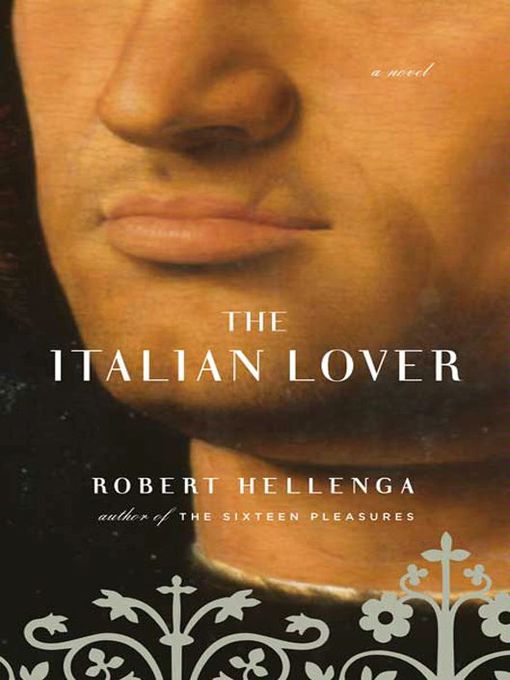
The Italian Lover
Margot Harrington Series, Book 2
کتاب های مرتبط
- اطلاعات
- نقد و بررسی
- دیدگاه کاربران
نقد و بررسی

June 11, 2007
Hellenga reprises protagonist Margot Harrington from The Sixteen Pleasures
(1995) in his latest, a romantic comedy about the book-to-film adaptation of Margot's memoir. In the fall of 1990, book restorer and longtime American ex-pat Margot is 53, living in her adopted Florence and awaiting the arrival of a film producer who wants to adapt her 1975 memoir for film. At the same time, Margot meets and falls in love with Alan “Woody” Woodhull, an Illinois-bred guitarist who gigs at the Bebop Club and also teaches literature at the American Academy. Meanwhile, producer Esther Klein desperately wants to make the film The Italian Lover
, her first solo production since her husband/production partner left her. The movie crew includes Michael Gardiner, the “middling” director dying of cancer, and Miranda Clark, the young actress desperate to capture the true Margot. Subplots abound and conflicts brew (Woody rescues an abused dog; Miranda has problems with a nude scene), but the characters never come fully to life. Elegant in its colorful use of Italian phrases, cuisine and sites, Hellenga's complex novel offers a vivid, often sophisticated view of modern Florence, but less so of its residents and visitors.

August 1, 2007
Hellenga puts a twist on familiar terrain in this sequel to "The Sixteen Pleasures". Metafictional gymnastics ensue when a Hollywood producer descends upon Florence with a cast and crew, determined to immortalize "The Sixteen Pleasures" on film. Renamed "The Italian Lover", the producer's script retells the story of book conservator Margot Harrington and the manuscript of Renaissance erotica she rescued from obscurity. Margot, however, has written a script of her own and is determined not to let control of her own life story fall out of her hands. Readers unfamiliar with the original novel may not immediately connect with a story that depends so closely on its predecessor. However, the realism of the filmmaking scenes and the loving depiction of the Florentine landscape just might redeem the novel for those new to Margot's story. Although some characters initially appear flat and irritating, they demonstrate obvious growth as the film shoot progresses, and their story arcs lead readers to conclusions that they may not have anticipated. An unusual experiment; recommended where Hellenga is popular.Leigh Anne Vrabel, Carnegie Lib. of Pittsburgh
Copyright 2007 Library Journal, LLC Used with permission.

Starred review from September 15, 2007
Certain writers inspire a kind of devotion in their readers, and Hellenga is one of those writers. His first novel, The Sixteen Pleasures (1994), about a young American woman who finds and restores a rare volume of erotica in Florence after the floods of 1966, remains one of those books that friends share with one another as if it were a treasuredheirloom. Now Hellenga returns to the heroine of that novel, Margo Harrington, in another sumptuous, sensual story of love found and lost. Decades have passed since Margo came to Florence, and her memoir of those days, also calledThe Sixteen Pleasures, is being filmed in the city by a divorcedAmerican producer out to prove she can succeed on her own. Not content with drawing on one previous novel and merging the facts of fictional and real-life publishing history, Hellenga also brings back the character of Woody Woodhull, from his second novel, The Fall of aSparrow (1998), who is now Margos lover. In addition, he introduces two more central characters, Miranda Clark, the actress who will star in Margos story, and Beryl Gardiner, the wife of the director of the film. There is almost too much plot here, as we watch each of the main characters negotiate theturbulent waters of a love affair, but Hellenga masterfully keeps all the stories afloat, with one feeding the other like themes in a fugue. In the end, the novel is a life-affirming ode to what Hellenga calls the spirit of the Renaissance, the discovery of this world, the wind in your hair, the rough pavement beneath your feet, a mans hand on your breast.(Reprinted with permission of Booklist, copyright 2007, American Library Association.)

























دیدگاه کاربران